Fred Vogel, Jr. Building Has Quite a History
Including the Third Ward, tanneries and many a Vogel. Oh, and a building worth $2.8 million.
The Third Ward fire of October 28th, 1892 consumed 16 densely packed blocks, destroyed 440 structures, displaced around 2,000 residents. and resulted in the deaths of five. To say that it turned the city’s commercial center into a ghost town would fall far short of the point, for there were but few hauntable buildings left standing.
Volume 1, Sheet 004 of the atlas shows Block 36 of the Original Plat of the City of Milwaukee, incorporated in Wisconsin Territory in 1846. It is bounded by Buffalo St. (north), Chicago St. (south) Water St. (west) and Broadway (east), and had long been subdivided into 20 lots, some quite large — in the quarter-acre range. Yet the mapmakers found only two structures standing here. One, on Water St., was an apparent survivor of the conflagration. The other, “equipped with sprinklers on all floors,” had been newly built for the National Distilling Co. on Lot 19 on Buffalo St.
Many others were to be constructed, in very short order, as the city’s architects flourished. Fred Vogel, Jr., whose Pfister & Vogel Tanning Company lost two structures in the fire, took out a permit in 1895 to build a five-story building, 150 feet deep and 50 feet wide, on lot 20, at 85-87-89-Buffalo St. (Now 231 E. Buffalo St.) Located immediately east of the distillery building, it was designed by Carl F. Ringer as an investment property for Vogel. Although it would not be occupied by P&V, it retained a leathery feel, as the entire 45,000-square foot structure was leased to the Beals & Torrey Co., wholesalers of rubber and leather footwear, and maker of B-P shoes. The firm left shortly after a 1920 merger, when the building was then leased to Patek Bros., manufacturers of paint, oil and glass. Shortly after Vogel died at 85 in 1936, the Patek concern bought it for $22,200, using it for decades thereafter as a warehouse.
A Study in Shifting Values
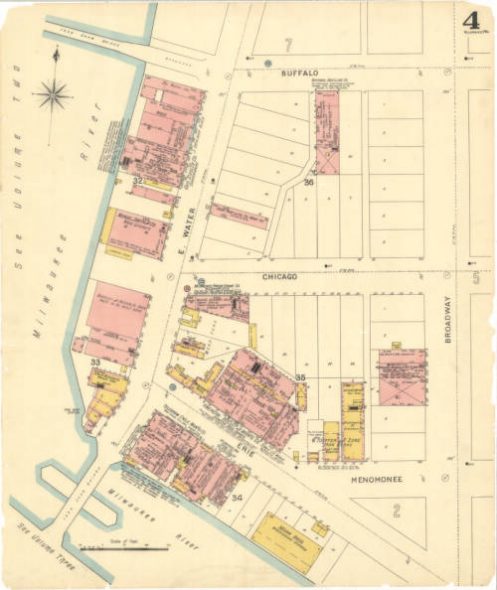
Milwaukee 1894, vol. 1, sheet 004 – Digital Sanborn Maps of Milwaukee, 1894 and 1910 UWM Libraries Digital Collections.
In 1949, twelve years after the Patek Bros. bought it, the building was assessed at $28,000, remaining at that level until 1952. The next year it was assessed at $51,000; that amount increased to $56,700 by 1959.
Then came a fall, as manufacturers were less reliant on ship or rail transportation, both of which were centered in the region, and the source of its initial prosperity. The freeway system brought access to a vast acreage of space, more open than the Third Ward had ever been, and suitable for modern industrial facilities, while the Third Ward emptied out. Once again buildings there were mere shells, yet this time uncharred, with roofs overhead, and a slight possibility of rebirth one day.
The changing valuations of the Fred Vogel, Jr. building illustrates the transformation.
In 1960, the assessed valuation was $48,730. In 1963 it dropped to $34,980, falling to $29,260 the next year. Thirty years later, in September, 1993, it was bought for $180,000 by a partnership organized by artist Tom Queoff, at a price that barely exceeded the rate of inflation during the period. Queoff immediately set to work repurposing the structure as a multi-use space for folks like himself.
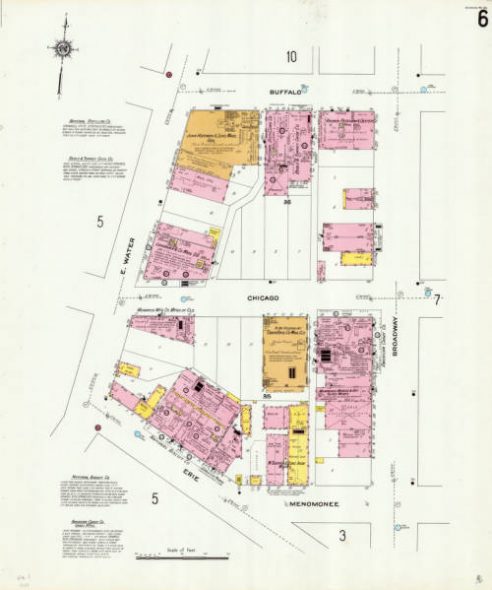
Milwaukee 1894, vol. 1, sheet 004 – Digital Sanborn Maps of Milwaukee, 1894 and 1910 – UWM Libraries Digital Collections
Queoff is a versatile sculptor in media ranging from steel to snow. He produces many one-off works (his ice sculptures would be good examples) as well as a number of limited edition pieces. Perhaps the largest edition in his oeuvre is the Wolski’s Milwaukee bottle opener, 8.6 ounces of solid brass, of which tens of thousands have been sold over four decades. You can get one for $40 on the Wolski’s website. It’s the same opener used in the 116-year-old tavern, we are told. But with the rise of canned beer, will the bottle opener go the way of the spitoon, also once a staple of the saloon?
The Building Today
The Fred Vogel, Jr. building is one of 70 contributing structures in the Historic Third Ward neighborhood, added in 1984 to the National Register of Historic Places. New construction, plus remodelings, like the rooftop deck added atop it, must be approved by the district’s Architectural Review Board. Now also known as The Buffalo Building, it features a bronze by Queoff on the facade featuring a stylized image of the head of a bull, genus Bison.
When Queoff began transforming the building, doing much of the work himself and with friends, there still remained traces of the neighborhood’s industrial past. Produce wholesalers opened at 4 a.m. on Broadway’s Commission Row, while spools of thread spun overhead, visible from the street below, being sewn into garments in a sweatshop on an upper floor of the Renaissance Building, 300 N. Water St.
The repurposing of the Fred Vogel, Jr. building was among the many similar projects that within decades would transform the twice-abandoned Third Ward into Milwaukee’s most vibrant — and valuable — neighborhood. It is now home to 25,000 residents, ten times more than lived here when the fire consumed it, and tens of thousands more than in the late 20th century.
Back in 1997, four years after he bought the place, Queoff filed an objection to the assessment of $830,000, arguing the building was “occupied by artists, not bankers.” The city prevailed and the assessment held.
Queoff remains the owner of the building, which is now assessed at $2,800,000.
About 8,000 square feet of space is currently available, where you can join Wizard Works Brewing, Muscle Alchemy, Somatic Arts Massage and the landlord himself. Annual rent is $20 per square foot for the upper floors, while a 3,445-square-foot, first-floor space in the 45,000-square-foot building is asking $25.
Who was Fred Vogel, Jr.?
To answer that question, let’s start with Frederick Vogel, Sr. [1823-1892]. Born Johann Friederich Vogel, he and fellow countryman Guido Pfister [1818-1889], both from tanning families, came to America in their early 20s from Hechingen and Kirchheim in Wurttemberg, Germany. After a couple of years working in a Buffalo tannery owned by a cousin of Vogel, they set off in 1847 for the city of Milwaukee [pop. 12,000] and promptly set up shop. Pfister, with $500 of his own savings, and a $5,000 line of credit, opened a leather goods store in the Third Ward. He ran the business end of things while Vogel, down in Walkers Point, was the tanner.
In June, 1848, the month after Wisconsin became a state, they organized the Pfister & Vogel Tanning Company, working 40 hides a day. According to a centennial history of the firm, by World War I:
It had grown to be the largest tannery in the world, with 2,400 employees at full-time production, which consisted of 31,200 pieces of total daily soakings of the various kinds of raw material employed.
Pfister’s Daughter Marries Vogel’s Son
The Pfister and Vogel familiar relationship became a familial one on April 23rd, 1889 when Fred Vogel, Jr. [1851-1936] married Louise Pfister [1857-1948], the adopted daughter of Guido Pfister. Her brother Charles Pfister [1859-1927] never married, and the family’s significant wealth would be destined to descend through her five children’s families. Charles lived with Fred’s family in a large house at 429 Jefferson St., just north of where he was constructing the Pfister Hotel. Its tower now occupies the site of the home.
While Pfister was expanding the holdings to include the Milwaukee Sentinel, Fred Vogel, Jr. continued operating the tannery, while constructing this building. Among his many other interests was serving as organizer and President of the First National Bank, and as the developer of its building which still stands at 735 N. Water St. He served 45 years on the board of Northwestern Mutual Life Insurance Co., retiring in 1935 as its longest serving trustee.
A Surprise Discovery
This spring Fred Vogel III [b. 1935] asked me to do some research on his family history to fill in some gaps in the Vogel Family Papers 1855-2022, archived at the Milwaukee Public Library, along with a couple of questions that had been puzzling him since his youth. I said I would include the Fred Vogel, Jr. building in my research.
He had never heard of the structure.
By chance I met a fellow named Doug Tabor while dining at Crave in Mequon. Tabor worked for Pfister & Vogel when its facility at 1531 N. Water St. was finally shuttered in February, 2000. At the time he was the Technical Manager of Wet End Operations, a job title I shall certainly give to a prominent character in any novel I might some day write.
I told him about my research project, and he said that when the building was scheduled for demolition he was permitted to salvage items from the office and yard. Among other things, he grabbed a bag of bricks and tossed them over the fence, lobbing them into the face of a friend helping him. Less dramatic was his rescue of a volume entitled The Principles of Leather Manufacture by H. R. Procter, F.I.C., F.C.S., published in London in 1902.
The title page was inscribed in neat script:
Fred Vogel Jr.
583 Cass Str.
Milwaukee, Wis.
The address (now 1119 N. Cass St.) was that of his $57,000 home, built in 1893, where he, his family and brother-in-law Charles Pfister lived. However the book remained in his office at the plant for decades after his death, and not in the now-demolished mansion’s library.
On May 28th, Tabor and I met with Fred Vogel III, who was presented with the volume. Tabor says he is happy that the book is in its rightful hands, while Vogel says the family archives hold few personal items such as this one, and that it will be a welcome addition.
Senior, then Junior, Yet Two Generations More to Get to III
Despite what you’d imagine from their names, Fred Vogel, Jr. was not the father of Fred Vogel III . He was instead his great-grandfather. The former indeed had a son named Fred A. Vogel [1880-1928], but the family was in no hurry to append Roman Numerals to the ends of their Freds. It was Fred Vogel junior’s eldest son Guido Charles Vogel [1877-1913] whose line was eventually to carry on the name. Guido’s only child William Dickerman Vogel [1908-1980] was the father of Fred Vogel III.
The Rundown:
- Name of Property: Fred Vogel, Jr. Building
- Address: 231 E Buffalo St., City of Milwaukee
- Assessed Valuation: The 9,000-square-foot lot is assessed at $270,000 ($30.00/s.f.), and the 45,000-square foot improvements are valued at $2,530,000 for a total assessed valuation of $2,800,000
- Taxes: 2023 Tax Bill $73,808.26. Current on installment plan. Includes $4,131.29 assessment for Bid #02
- Owner: 231 East Buffalo LLC. Registered 12/29/2011. Declared Delinquent 07/01/2024 Thomas J. Queoff, Registered Agent
- Type: Multi Story Warehouse
- Architect: Carl F. Ringer
- Style: Commercial Vernacular
- Neighborhood: Historic Third Ward. Contributing structure to Historic District; National Register of Historic Places
- Subdivision: Original Plat City of Milwaukee Block 36, Lot 20
- Aldermanic District: 4th; Robert Bauman
- Walk Score: 97 out of 100 “Walker’s Paradise” MKE average: 62
- Transit Score: 72 out of 100 “Excellent Transit” MKE average: 49
- Bike Score: 82 out of 100 “Very Bikeable” MKE average: 58
How Milwaukee is it? It is a mere 0.6 miles due south of City Hall
Photo Gallery
If you think stories like this are important, become a member of Urban Milwaukee and help support real, independent journalism. Plus you get some cool added benefits.
What's It Worth?
-
Milwaukee Yacht Club Worth $2.28 Million
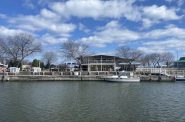 Mar 27th, 2024 by Michael Horne
Mar 27th, 2024 by Michael Horne
-
Wisconsin Club Worth $5.1 Million
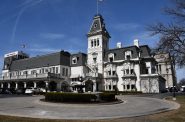 Mar 17th, 2024 by Michael Horne
Mar 17th, 2024 by Michael Horne
-
Woman’s Club of Wisconsin Is Nation’s Oldest
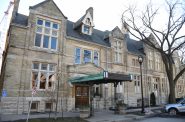 Jan 29th, 2024 by Michael Horne
Jan 29th, 2024 by Michael Horne


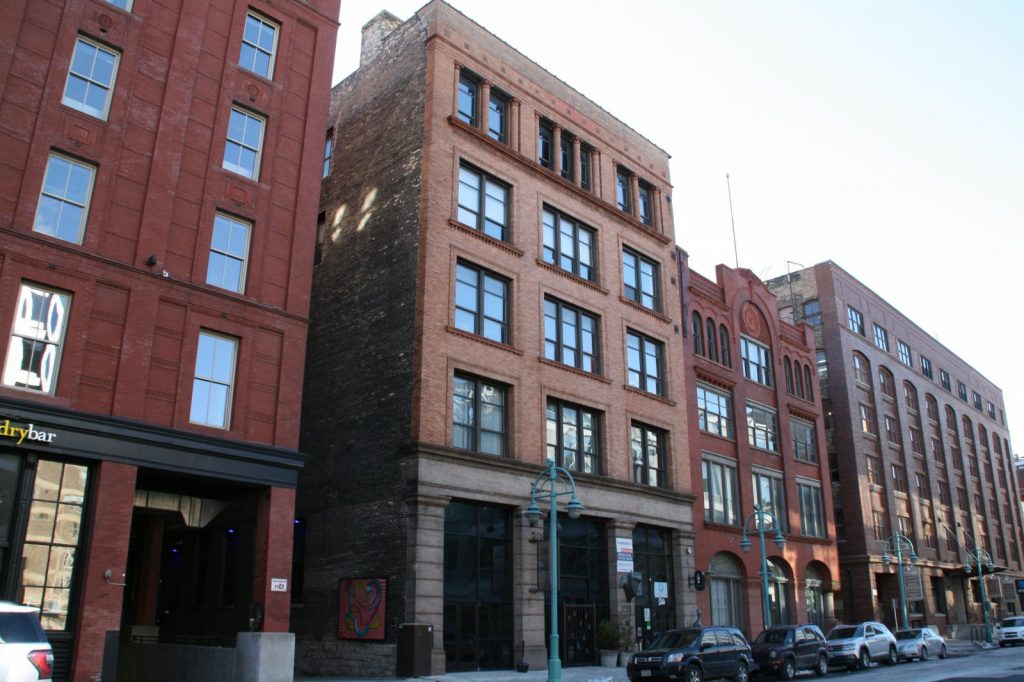
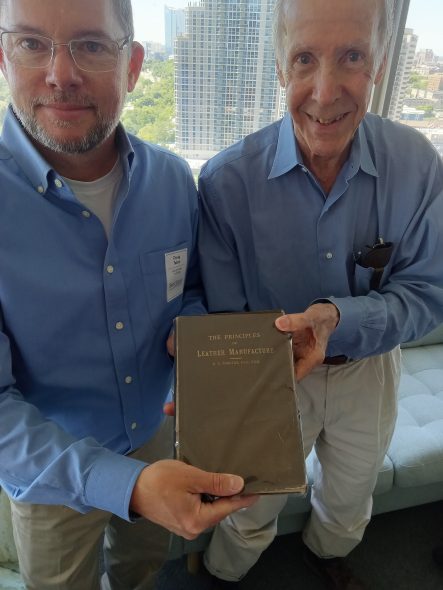
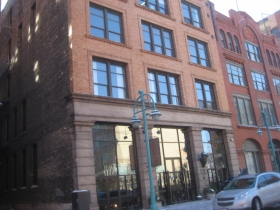
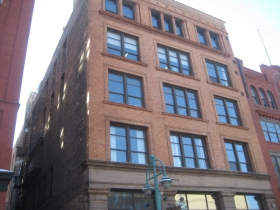
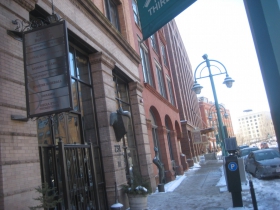
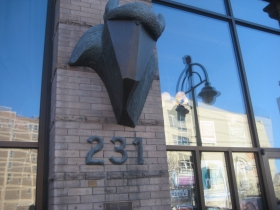
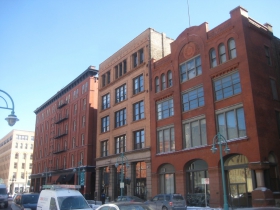
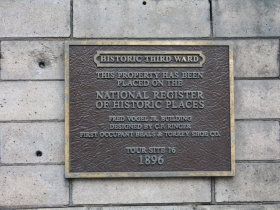



















FLORENCE ISMAN HIGH END MANUFACTURER OF children clothes on the 2 & 3 floors was NEVER A ” SWEAT SHOP ” a hole!!
330 North Water Street a build owned by the GOODMAN FAMILY in 1980s was occupied by several respectable tenants over the years before becoming the Renaissance Building ( Harley Davidson to including myself when I was in the gourmet seasoning business.)